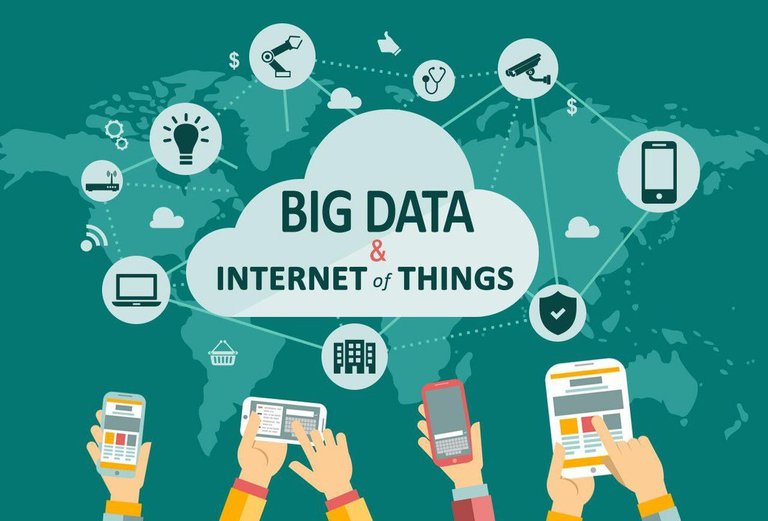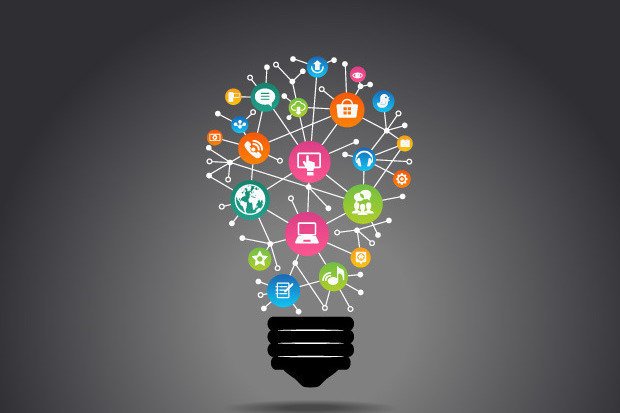The Internet of Things (IoT), alludes to the billions of physical gadgets around the globe that are presently associated with the web, constantly gathering and sharing information with each other. On account of affordable processors and wireless network systems, it's conceivable to turn anything, from a pill to a plane to a self-driving vehicle into part of the IoT. This includes a dimension of computerized insight to gadgets that would be generally moronic, empowering them to convey constant information without a person included, adequately consolidating the advanced and physical universes.
How IoT actually works
An IoT community comprises of web-empowered brilliant gadgets that use installed processors, sensors and correspondence equipment to gather, send and follow up on information they gain from their surroundings. IoT gadgets share the sensor information they gather by interfacing with an IoTentryway or other edge gadgets where information is either sent to the cloud to be dissected or broke down locally. Some of the time, these gadgets communicate back and forth with other related gadgets and follow up on the data they get from each other. The gadgets do the greater part of the work without human intercession, despite the fact that individuals can cooperate with the gadgets - for example, to set them up, give them guidelines or access the information.

Benefits of the Internet of Things
The advantages of the IoT for business rely upon the specific usage, yet the key is that companies ought to approach more information about their own items and their own inward frameworks, and hence have a greater opportunity to make noteworthy changes subsequently.
The web of things offers various advantages to associations, empowering them:
• Screen their general business forms;
• Improve the client experience;
• Spare time and cash;
• Upgrade worker profitability;
• Coordinate and adjust plans of action;
• Settle on better business choices; and
• Produce more income.
IoT urges organizations to reevaluate the manners in which they approach their organizations, ventures, and markets and gives them the devices to improve their business methodologies.
IoT applications
There are various certifiable utilizations of the internet of things, running from costumer IoT and undertaking IoT to assembling and industrial IoT (IIoT). IoT applications range various verticals, including car, telco, vitality and that's only the tip of the iceberg.
In the buyer fragment, for instance, smart houses that are outfitted with shrewd indoor regulators, brilliant apparatuses and inbuilt connected heating, lighting and electronic gadgets can be controlled remotely by means of PCs, cell phones or other devices.
Wearable gadgets with sensors and programming can gather and examine client information, sending messages to different advancements about the clients with the point of making clients' lives less difficult and increasingly convenient. Wearable gadgets are additionally utilized for analyzing customer data and are also used for public safety measures.

Li-fi (a part of IoT)
Li-Fi is another way to say "light loyalty." It's a remote correspondence innovation that uses noticeable light for the fast transmission of information or in other words high-speed transmission of data and information between gadgets. What makes it so noteworthy is that it uses the noticeable light range, and infrared radiation, to transmit information.
The LED lights require so little vitality; a standard ethernet cord can fuel them. Harald Haas has additionally proposed that sun-oriented cells charging batteries could fuel the smart lights. Furthermore, LiFi does not make electromagnetic impedance the manner in which WiFi does, which means it could have imperative applications in sensitive areas like human healthcare offices.
What's more, really, the way that LiFi can't go through dividers makes the data stream in a split second progressively secure; clients must be physically in the space so as to get to the information.
Moreover, LiFi could be introduced anyplace clients may like light and information administrations: public transport, train stations, road lights, visitor data stands could all give information transmission along with the light.
As the market for IoT gadgets develops and sensors are added to an ever-increasing number of things and places, quicker and heavier information transmission will be required. Our present foundation essentially can't deal with the amount of information that should be transmitted if the IoT keeps on developing at anticipated rates.
LiFi might be the main practical arrangement on the off chance that we need Big Data and the IoT to keep on developing.
Since existing LED light innovation requires just the expansion of a minor microchip to turn into a LiFi transmitter, in the long run, an increasing amount even more than 14 billion lights on the planet could be changed over into 14 billion LiFi transmitters.
The organization pureLiFi has just discharged an attachment and-play LiFi framework with a limit of 11.5 MB every second, equivalent to original WiFi. Different undertakings are trying innovation in places of business and emergency clinics around the globe.

Why does the Internet of things matter?
When something is associated with the web that implies that it can send data or get data, or both. This capacity to send as well as get data makes things brilliant, and being brilliant and smart is great.
Smartphones, for instance, at this moment you can tune in to pretty much any melody on the planet, yet it's not on the grounds that your telephone really has each tune on the planet stored in it. This is only possible because each melody on the planet is put away elsewhere, yet your telephone can send data (requesting that tune) and after that get data (playing or in more technical terms streaming that tune on your telephone).
In the Internet of Things, every one of the things that are being associated with the web can be put into three classifications:
1. Things that gather data and after that send it.
2. Things that get data and after that follow up on it.
3. Things that do both.
And every one of the three of these has gigantic advantages that feed on one another. The Internet of Things is slowly taking over the world. But with smart decisions, we can achieve much more than we need or desire.
Peace @timscott
I have read your post and I will share this information with you.
Do you know that partiko is a steem dapps that can help you earn fairly steem power ? If you would to be guide to increase your potential to blog on steem ecosystem feel free to comment on my latest post.
Warm regards.
Posted using Partiko Android